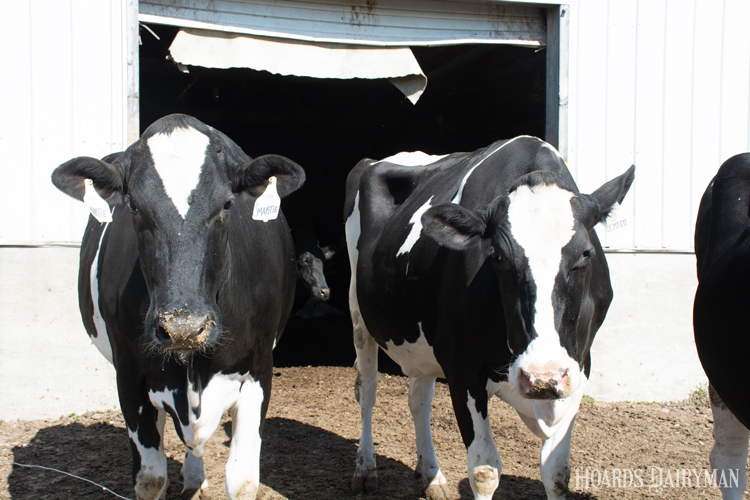
Compared to the day before calving, a cow’s body will need 300% more energy and 65% more calcium the day after it has calved. That’s like if a human went from lying on the couch to running two marathons in two days, described Luciano Caixeta.
It’s not surprising that this abrupt metabolic change leads to most diseases occurring during the first 30 days in milk. During a Penn State Extension webinar, Caixeta discussed how to monitor ketosis in cows going through what he calls this “transitions period” because there are multiple changes happening in the cow’s body and environment.
The assistant professor of dairy production medicine at the University of Minnesota College of Veterinary Medicine noted that when a cow needs additional energy, it will mobilize body reserves, often high-energy adipose tissue. Some of the fatty acids produced will be partially oxidized to produce ketones. This is an important function because if the body is overwhelmed and can’t make ketones, fatty acids will accumulate in the liver, reducing the ability of other cells to function and produce energy.
Along with clinical signs like reduced appetite and weight loss, though, an elevation of ketones indicates ketosis. These cows produce less milk, have poorer reproduction, and are more likely to contract other diseases and leave the herd.
Ketosis is generally defined as blood beta-hydroxybutyrate (BHB) levels over 1.2 millimoles per liter (mmol/L). Levels between 1.2 and 1.9 mmol/L indicate subclinical ketosis, while Caixeta said a BHB level over 3 mmol/L designates clinical ketosis.
Making that distinction will determine how animals should be treated. While he recommends propylene glycol as supportive care for both types of cases, he cited a study done at Cornell University that found no benefit to automatic dextrose treatment. That should be saved for clinical cases, he recommended
“Giving dextrose to cows that are not down is not beneficial,” he said while encouraging farms to discuss their protocol with their vet. “The most important thing is certainly the propylene glycol.”
Of course, a correct diagnosis depends on precise testing. Both blood and urine cowside ketosis tests can return accurate results quickly, although a blood test may be slightly more expensive. Caixeta pointed out, though, that the tests measure different ketones. Blood tests measure BHB, while urine tests measure acetoacetate. Both are effective when you know what you’re testing.
A good goal is to have less than 15% of the herd with BHB levels over 1.2 mmol/L, he noted. However, Caixeta said there are different levels of concern with high BHB.
Most ketosis occurs in the first 10 days in milk. Caixeta described a study they did where cows with high BHB in the second week of lactation but no clinical symptoms of illness showed no differences in milk production or reproductive performance compared to cows with no ketosis.
“That’s telling me that ketosis affects cows differently,” he said. He described that further into lactation, cows are likely using the ketones more efficiently to make more milk. If a cow has high BHB but doesn’t appear sick, we may not need to worry.
“Not all high BHB is the same. It’s important to monitor, but there’s a caveat,” Caixeta summarized, adding that his team is looking into what level may be a good indicator of these cows better adapted to high ketone levels.





